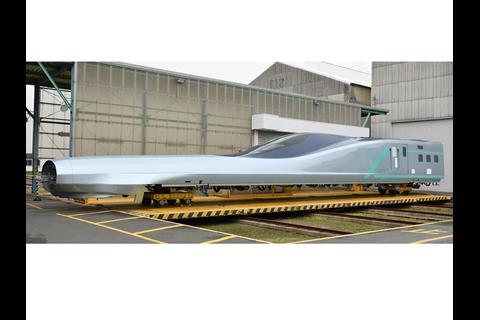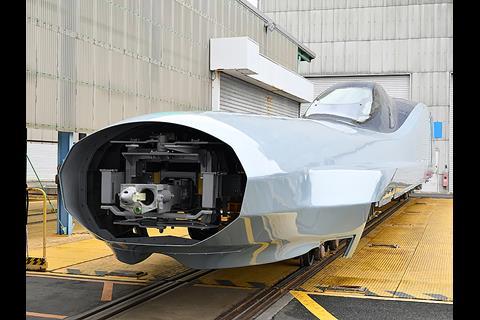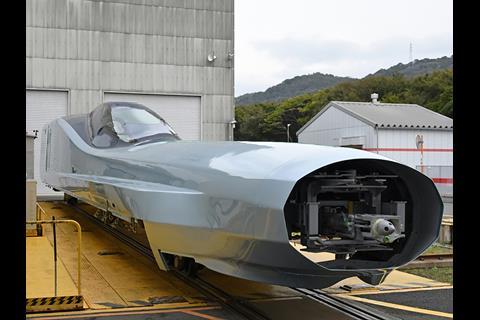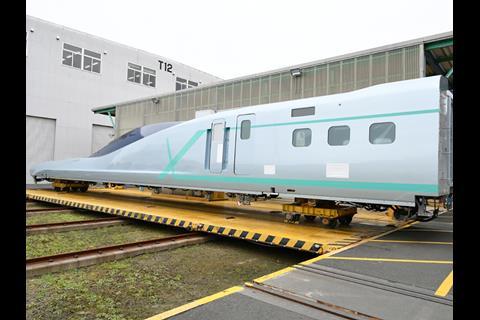JAPAN: East Japan Railway has unveiled the second driving car for its experimental ALFA-X Shinkansen trainset, which features a 22 m long aerodynamic nose designed to mitigate the sonic boom effect of entering and passing through tunnels at very high speed.
Built at Hitachi's Kasado plant, Car 10 has a 26·5 m body of which only about 4·5 m is devoted to passenger accommodation with just three rows of seating. The cab is integrated into the nose design, protruding from a very long almost horizontal low-level cone formed of welded structural aluminium alloy with a tensile strength of 270 MPa.
The performance of the 22 m long nose will be compared with that of the 16 m long nose of Car 1, which was displayed at the Kawasaki Heavy Industries plant in Kobe on December 12. This is similar to the 15 m nose of Series E5 trainsets currently in service on the Tohoku Shinkansen.
Due for delivery to JR East in May, the 10-car Series 956 trainset will be used to test a range of design features and equipment intended for series-built derivatives that will operate Tokyo – Sapporo Shinkansen services once the Hokkaido Shinkansen is completed around 2030. These are intended to run at a maximum speed of 360 km/h, but JR East is planning to carry out tests with the experimental trainset at up to 400 km/h.
The ALFA-X is equipped with electromagnetic rail brakes and roof-mounted aerodynamic brakes dubbed ‘cat ears’ which are intended to bring the train to a rapid halt in the event of an earthquake. The aim is to bring the train to a stand from maximum speed within 4 000 m. The cat ears normally remain in the horizontal position but can be activated from a remote control centre, along with the electromagnetic rail brakes. Similar roof-mounted aerodynamic brakes were tested on the Fastech 360 trainsets which were used as development prototypes for the Series E5 and E6 fleets from 2005.





















